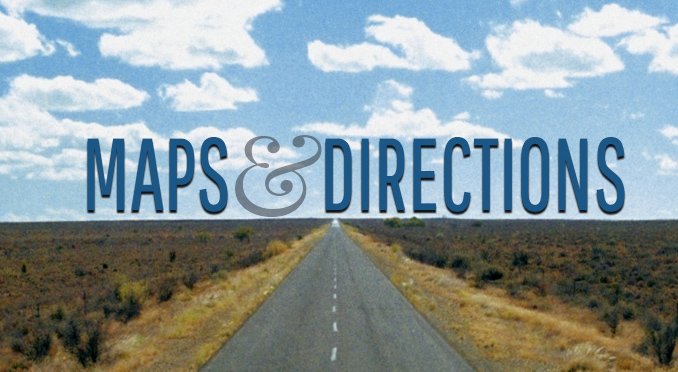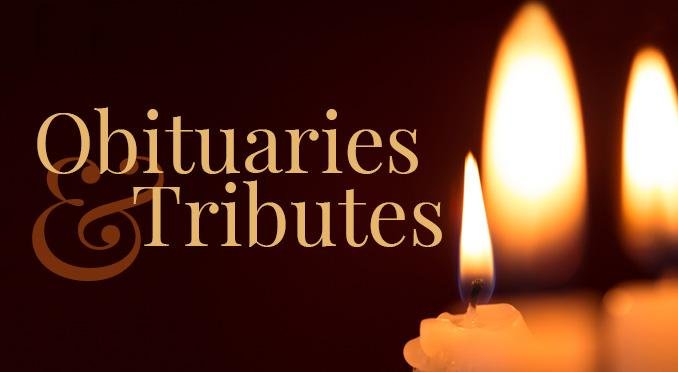Funeral Services
Burial Services
Traditionally, a burial service involves a visitation, followed by a funeral service in a church, or other place of worship. The casket is typically present at both these events, and it is your decision on whether to have the casket open or not. You have the option of having the remains interred (earth burial), or may be entombed in a crypt inside a mausoleum (above ground burial). Family or religious traditions are often a factor for choosing burial. Decisions need to be made on whether the body needs to be embalmed, what kind of casket to use, what cemetery to use and what to put on the gravestone.
Cemetery Types
Monumental cemetery: A monumental cemetery is the traditional style of cemetery where headstones or other monuments made of marble or granite rise vertically above the ground. There are countless different types of designs for headstones, ranging from very simple to large and complex.
Lawn cemetery: A lawn cemetery is where each grave is marked with a small commemorative plaque that is placed horizontally at the head of the grave at ground-level. Families can still be involved in the design and the information contained on the plaque, however in most cases the plaques are a standard design.
Mausoleum: A mausoleum is an external free-standing building constructed as a monument enclosing the interment space or burial chamber of a deceased person or people. A mausoleum may be considered a type of tomb or the tomb may be considered to be within the mausoleum. The most famous mausoleum is the Taj Mahal in India.
Columbarium: Columbarium walls are generally reserved for cremated remains. While cremated remains can be kept at home by families or scattered somewhere significant to the deceased, a columbarium provides friends and family a place to come to mourn and visit. Columbarium walls do not take up a lot of space and it is a cheaper alternative to a burial plot.
Natural cemeteries: Natural cemeteries, also known as eco-cemeteries or green cemeteries is a new style of cemetery set aside for natural burials. Natural burials are motivated by the desire to be environmentally conscience, although natural burials can be performed at any type of cemetery, they are usually done in a natural woodland area. Conventional markings such as headstones are generally replaced with a tree or a bush or a placement of a natural rock.
Burial FAQ
What is opening and closing and why is it so expensive?
Opening and closing fees can include up to and beyond 50 separate services provided by the cemetery. Typically, the opening and closing fee include administration and permanent record keeping (determining ownership, obtaining permission and the completion of other documentation which may be required, entering the interment particulars in the interment register, maintaining all legal files); opening and closing the grave (locating the grave and laying out the boundaries, excavating and filling the interment space); installation and removal of the lowering device; placement and removal of artificial grass dressing and coco-matting at the grave site, leveling, tamping, re-grading and sodding the grave site and leveling and re-sodding the grave if the earth settles.
Can we dig our own grave to avoid the charge for opening and closing?
The actual opening and closing of the grave is just one component of the opening and closing fee. Due to safety issues which arise around the use of machinery on cemetery property and the protection of other gravesites, the actual opening and closing of the grave is conducted by cemetery grounds personnel only.
Why is having a place to visit so important?
To remember and to be remembered are natural human needs. A permanent memorial in a cemetery provides a focal point for remembrance and memorializing the deceased. Throughout human history, memorialization of the dead has been a key component of almost every culture. Psychologists say that remembrance practices, from the funeral or memorial service to permanent memorialization, serve an important emotional function for survivors by helping them bring closure and allowing the healing process to begin. Providing a permanent resting place for the deceased is a dignified treatment for a loved one’s mortal remains, which fulfills the natural human desire for memorialization.
What happens when a cemetery runs out of land?
When a cemetery runs out of land, it will continue to operate and serve the community. Most cemeteries have crematoriums, and some historic cemeteries even offer guided tours.
In a hundred years will this cemetery still be there?
We think of cemetery lands as being in perpetuity. There are cemeteries throughout the world that have been in existence for hundreds of years.
How soon after or how long after a death must an individual be buried?
There is no law that states a specific time from for burial. Considerations that will affect timeline include the need to secure all permits and authorizations, notification of family and friends, preparation of cemetery site and religious considerations. Public heath laws may have limitations on the maximum length of time allowed to pass prior to final disposition. Contact your local funeral provider for more details.
Does a body have to be embalmed before it is buried?
No. Embalming is a choice which depends on factors like if there is to be an open casket viewing of the body or if there is to be an extended time between death and internment. Public health laws may require embalming if the body is going to be transported by air or rail.
What options are available besides ground burial?
Besides ground burial, some cemeteries offer interment in lawn crypts or entombment in mausoleums. In addition, most cemeteries provide choices for those who have selected cremation. These often include placement of cremated remains in a niche of a columbarium or interment in an urn space.
What are burial vaults and grave liners?
These are the outside containers into which the casket is placed. Burial vaults are designed to protect the casket and may be made of a variety or combination of materials including concrete, stainless steel, galvanized steel, copper, bronze, plastic or fiberglass. A grave liner is a lightweight version of a vault which simply keeps the grave surface from sinking in.
Must I purchase a burial vault?
Most large, active cemeteries have regulations that require the use of a basic grave liner for maintenance and safety purposes. Either a grave liner or a burial vault will satisfy these requirements. Some smaller rural or churchyard cemeteries do not require use of a container to surround the casket in the grave.
Cremation Services
Cremation is an alternative to the burial process and it is chosen by many people because of religious beliefs, the desire to preserve the environment or it was requested by the person who died. Cremation is also a less expensive option in comparison to a burial. The remains are placed in a container that is combustible and placed in a special furnace called a cremation chamber or a crematory where through intense heat is reduced to bone fragments that are then crushed and pulverized to resemble course sand. The cremated remains of an average adult body will weigh about 7-8 pounds. Cremation is not an alternative to a funeral, but rather an alternative to burial or other forms of disposition.
Cremated remains can be scattered or buried, or they may be kept with the family in a decorative urn. There are many new and different ways to dispose of ashes today, cremated remains can be placed in an artificial coral reef in the ocean, they can be launched into space or sent up in helium balloons, or they can be spun into glass pieces of art or diamonds.
Some religions welcome cremation while others forbid it. The Catholic Church had banned cremation up until 1963, and burial remains the preferred form of disposition today. In other Christian denominations cremation was historically discouraged but nowadays it is more widely accepted. In eastern religions such as Hinduism, Jainism, Sikhism and Buddhism cremation is mandated, while in Islam it is strictly forbidden. Orthodox Jews also forbid cremation; other sects of Judaism support cremation, but burial remains the preferred option.
Cremation FAQ
What is Cremation?
Cremation is the process of reducing the human body to bone fragments using high heat and flame. Cremation is not the final disposition of the remains, nor is it a type of funeral service.
Is a casket needed for Cremation?
No, a casket is not required, most states require an alternative container constructed of wood or cardboard, however, in some states no container is required.
Is embalming required prior to cremation?
No. In fact it is against the law for a funeral home to tell you otherwise.
Can the body be viewed without embalming?
Yes, most crematories allow immediate family members to briefly view the deceased prior to cremation.
Can the family witness the cremation?
Yes they can; some cremation providers will allow family members to be present when the body is placed in the cremation chamber. Some religious groups even include this as part of their funeral custom.
Can an urn be brought into church?
Nearly all Protestant Churches allow for the urn to be present during the memorial service. Most Catholic Churches also allow the remains to be present during the Memorial Mass. It is encouraged that cremated remains be a part of a funeral as it provides a focal point for the service.
What can be done with the cremated remains?
While laws vary state by state, for the most part remains can be buried in a cemetery lot or a cremation garden, interred in a columbarium, kept at home or scattered.
How can I be sure I receive the correct remains?
All reputable cremation providers have developed rigorous sets of operating policies and procedures in order to maximize the level of service and minimize the potential for human error. Since it is illegal to perform more than one cremation at a time, and the vast majority of crematories can only cremate one body at a time, it is next to impossible to receive the incorrect remains.
How long does the actual cremation take?
It all depends on the weight of the individual. For an average sized adult, cremation can take two to three hours at a normal operating temperature of between 1,000 and 2,000 degrees Fahrenheit.
What do the cremated remains look like?
Cremated remains resemble coarse sand and are whitish to light grey in color. The remains of an average sized adult usually weighs between 7 and 8 pounds.
Are all the cremated remains returned?
With the exception of minute and microscopic particles, which are impossible to remove from the cremation chamber and processing machine, all of the cremated remains are given back to the family.
Do I need an urn?
An urn is not required by law. However, an urn may be desired if there is to be a memorial service or if the remains are to be interred in a cemetery. If an urn is not purchased or provided by the family, the cremated remains will be returned in a temporary plastic container.
At Ryan Funeral Home, we invite you to contact us at any time if you have questions, comments or concerns.
We are here to assist you in anyway we can.
Our trusted local florists are committed to offering only the finest floral arrangements backed by their professionalism and prompt service.
We are here for you when you need us.
Visit our online tribute pages and view pictures, leave a gesture or leave a condolence. We are here to compassionately guide you, your family and your friends through a difficult time.



